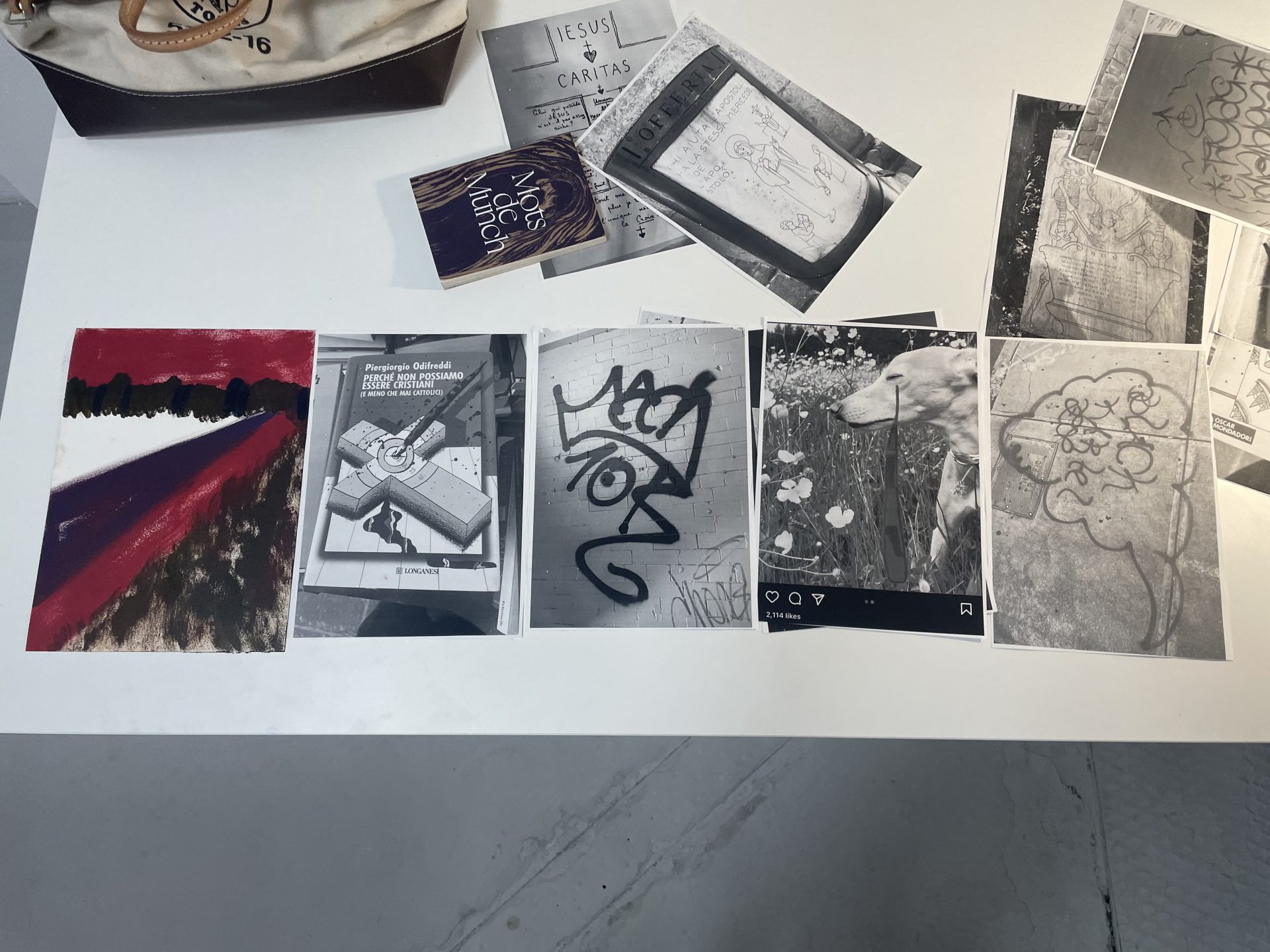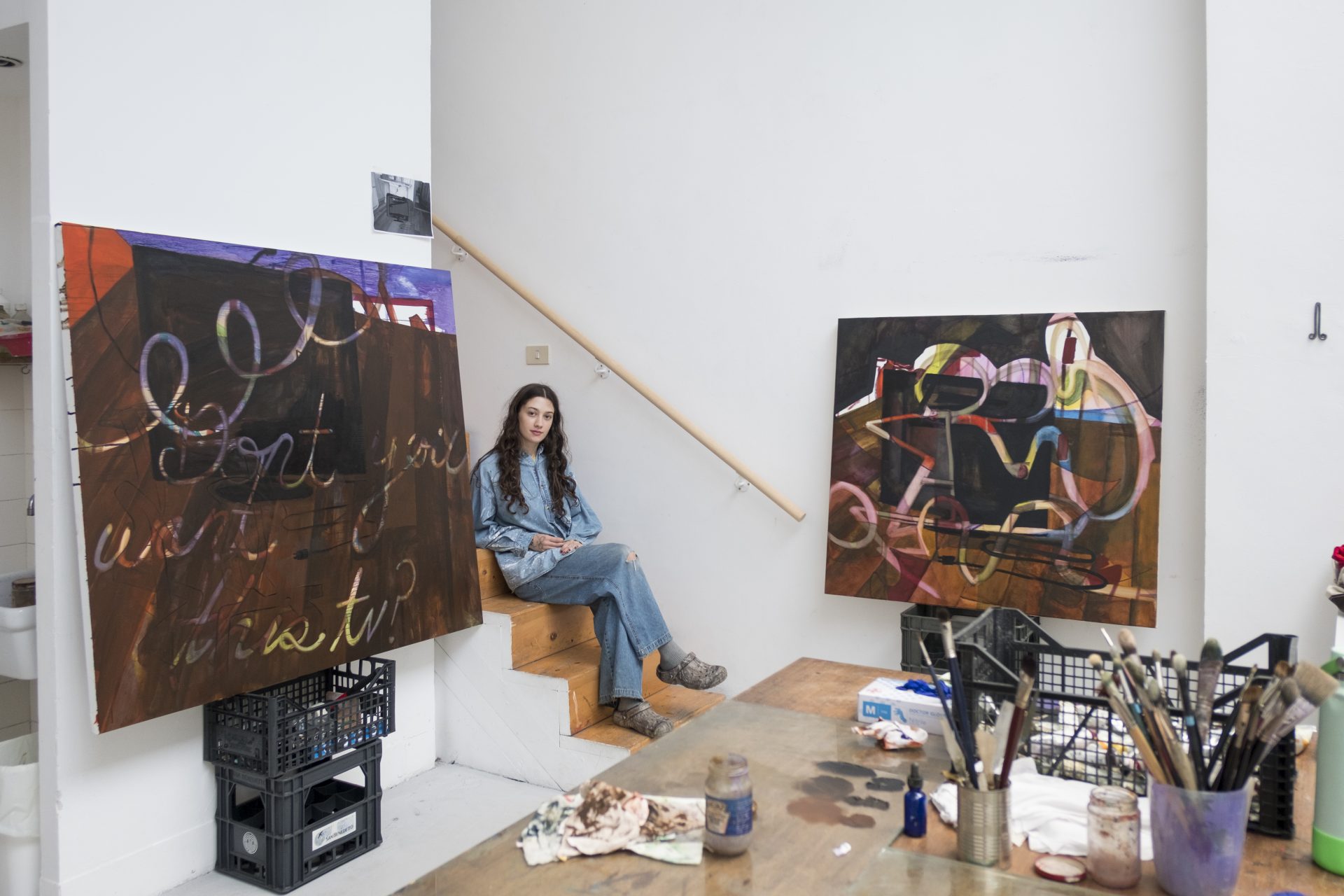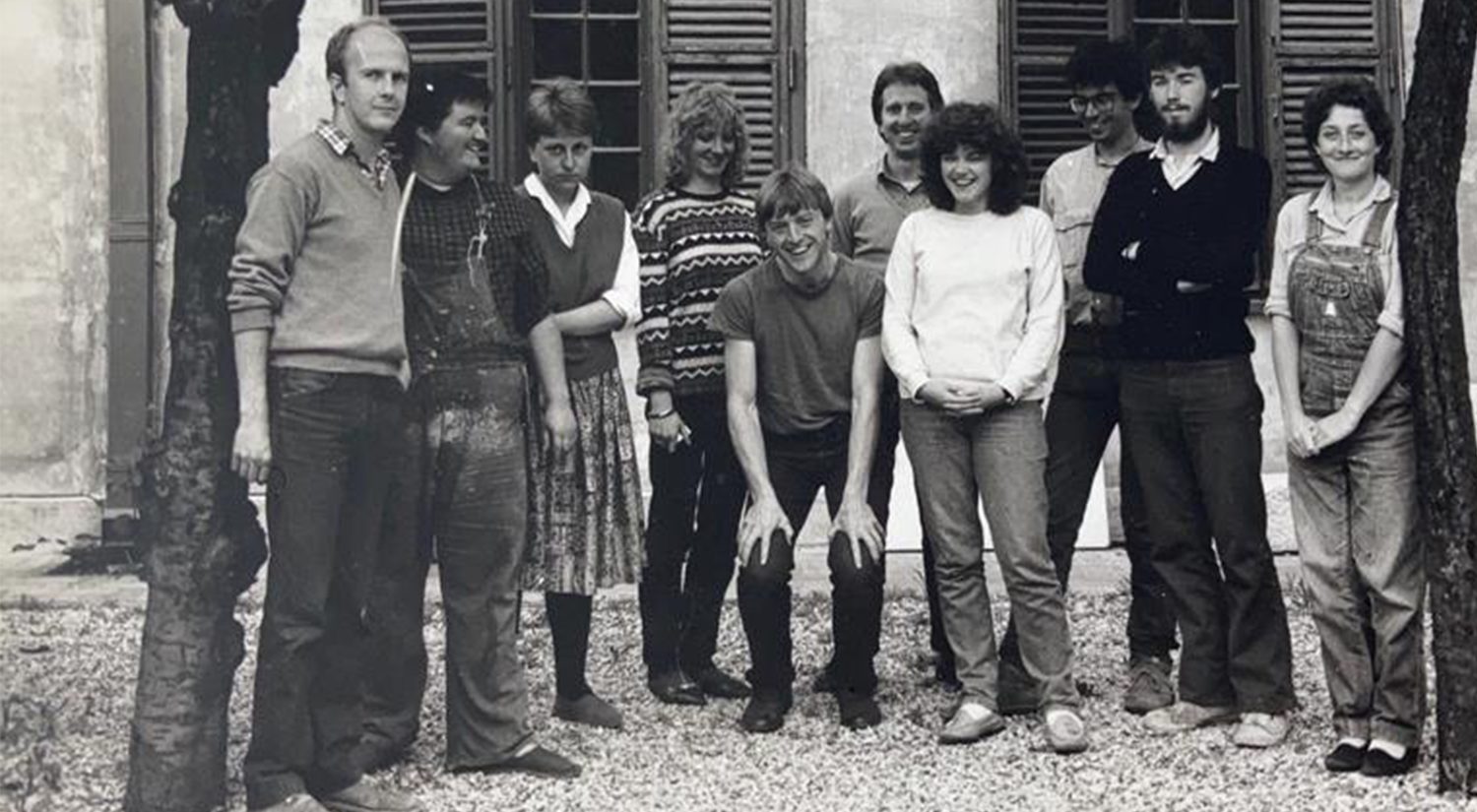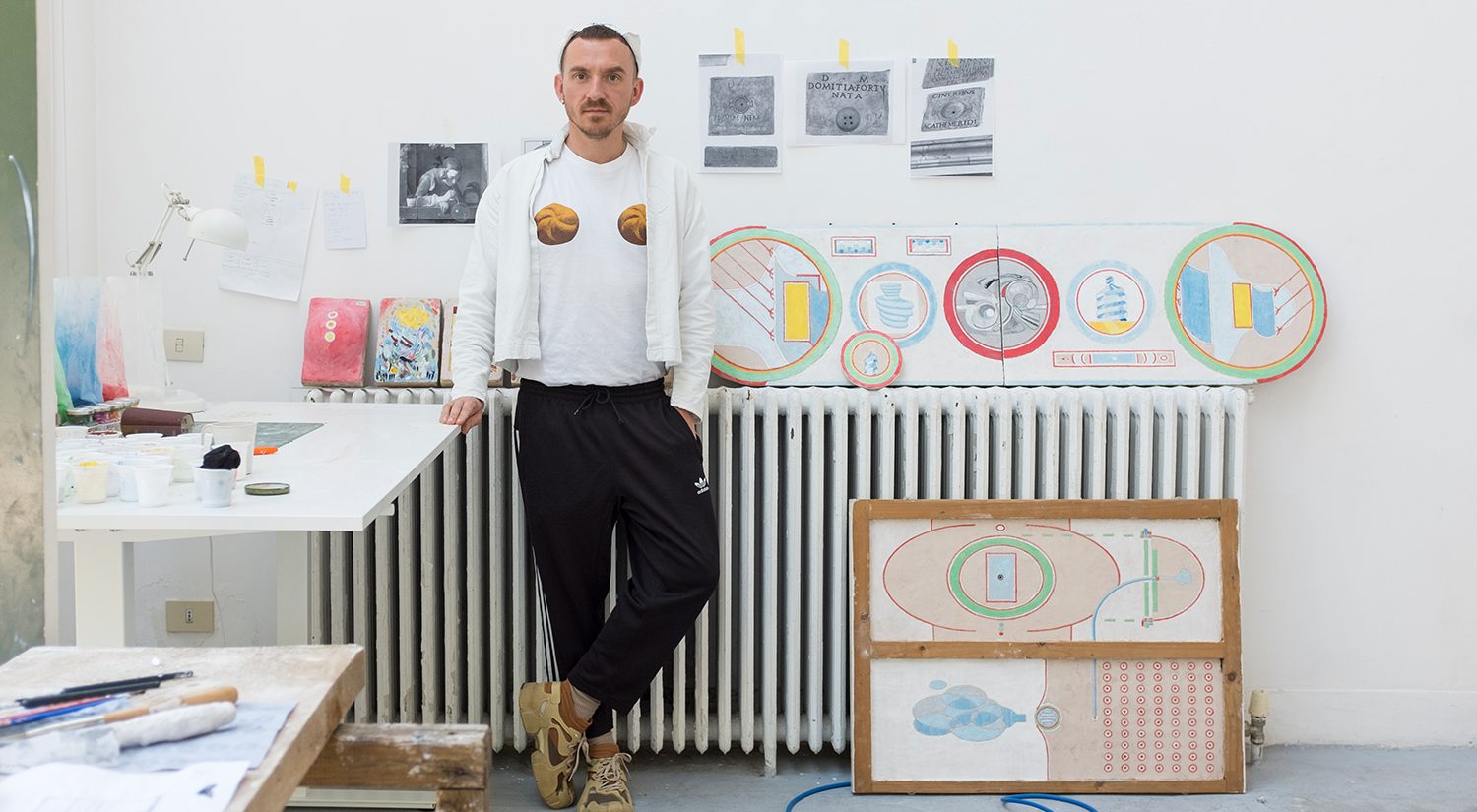An interview with Lucy Tarquinio, winner of The Abbey Scholarship in Painting, in which she speaks about the work she has produced during her residency at the BSR from September–December 2022, ahead of the Autumn Open Studios.
You seem to have a special connection with your paintings. You’re able to question them and let them question your practice in a nurturing exchange that often materialises in a reconsideration of the whole canvas. Could you tell us more about this lively and dynamic relationship?
My paintings are built up in a process that is reactionary and caring. I begin an image often by painting intuitively or gesturally, and as more material is added to the surface I begin to have to reckon with what it is telling me, or how the image is naturally evolving. I think of the process as one that creates issues, and then implements unique frameworks to solve them. There isn’t an exact way to finish a painting, but in order to arrive at an image it helps to think of my surface space as a problematic one: something to have to wrangle or tame. Oil paint is a material that can never be totally controlled, it has a level of sovereignty. I find that it helps to think of paint as an autonomous being to collaborate with, rather than a material in which I use to get the job done. I recognize how much control the paint has over the image, and how much control it has over my hand. Thinking of the process as a physical act, or even as an exercise, helps to clarify the reasons why I make paintings. What I think about and have to work through, problems of linework and form, language and writing, my chosen reference imagery, my influences, my experience with viewership, painting history… it’s all contextualized by the process itself.
I find that it takes at least a few days to fully understand each new added layer of paint, how it has changed the previous surface and what the image is now begging for. The reception often changes drastically throughout this time: it helps me to articulate visual language and resolution. It can be difficult to talk about my paintings when there is no exact formula that defines a completed image: but by treating the material with care and consideration, I can better describe that feeling of a finished painting which I’m constantly chasing after.
My objective by using material in this way is to create images that expand the experience of viewing. I want there to be time spent on describing, understanding, materializing, discussing, realizing the paintings and the subject matter within them.

Image: Reference images in the studio & little work in progress, BSR, November 2022
How do writing and drawing inform your work?
I like finding moments in life that feel painterly and I tend to document them. I use drawing to flatten these moments and prepare them for entering the painting space. I think of drawing as a way to cement a thought, phrase, photo, or moment within a point in time of my work. Not every drawing will make its way to the painting space, but they all exist to describe the image process through form and composition. The drawing space is very particular in that it can be a way to think of form in a singular existence: In the drawing there is no ground for the figure to interact with, and so its form exists flatly. The totality of it helps to eliminate certain formal issues before the paint is introduced.
My experience with drawing tends to be quick or momentary; often done in one sitting or in bursts. My experience with writing is similarly spontaneous, however it also involves a process of revision, similar to but not quite to the extent of that of the constant revisitation of my paintings. I write emotionally and playfully about the physical interaction between myself and my paintings. As if properties of oil painting and physical stance are innately related, using anecdotes of the painting process to articulate my thoughts and actions.
At the BSR I’m currently working on a fictional story composed of watercolor drawings as well as writing, centered around a yellow splat-shaped character moving his way through a dark world. The resolution of this character’s story is intended to function alongside the rest of my work. The yellow splat character exists to personify the journey a painting takes to reach a successful endpoint, and dramatize the sometimes randomness of image construction.

Image: Untitled drawing, (from little yellow guy series), BSR, October 2022











